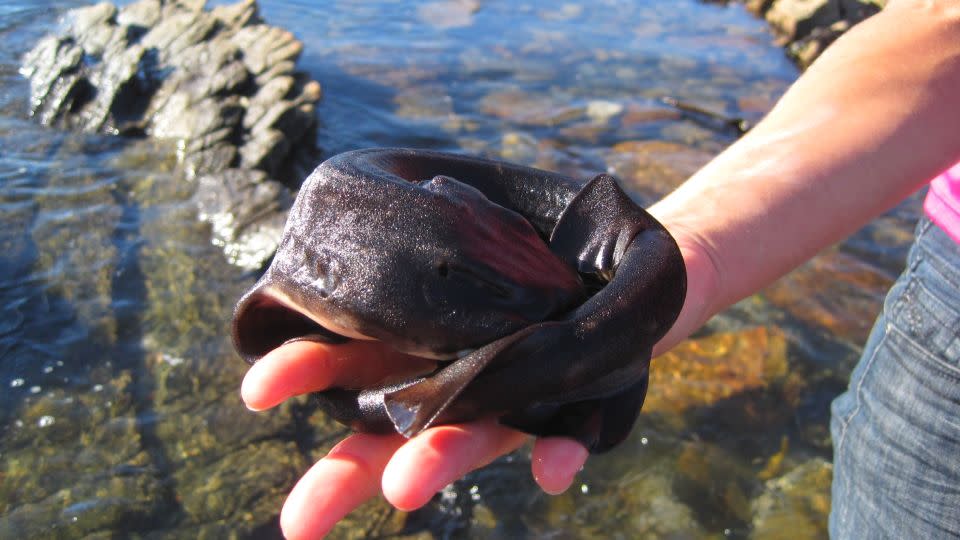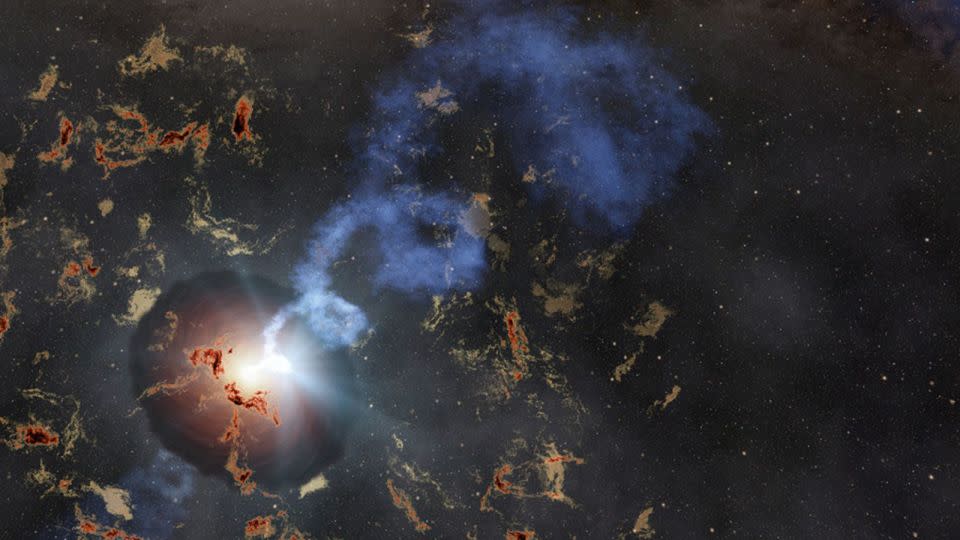SpaceX launch attempt ends in loss of most powerful rocket ever built

Editor’s note: A version of this story appeared in CNN’s Wonder Theory science newsletter. To get it in your inbox, sign up for free here.
To say that space is a challenging environment is putting it lightly.
During a recent spacewalk outside the International Space Station, a tool bag got away from NASA astronauts Jasmin Moghbeli and Loral O’Hara. The bag has gone into orbit around Earth and may be visible through binoculars until it disintegrates in our planet’s atmosphere.
Meanwhile, Mars and Earth are now orbiting on the opposite sides of the sun, temporarily disrupting communications between NASA and its robotic explorers investigating the red planet.
Until the solar conjunction ends on November 25, the fleet of orbiters and rovers have sizable to-do lists they can work through before it’s time to check in with ground control once more.
Zero gravity, harsh radiation and vast distances are just some of the obstacles to space exploration that require years of technological development and research to overcome.
And after months of rebuilding following an explosive initial launch in April, SpaceX made a second attempt at launching its deep-space rocket system Starship, but not all went according to plan.
Defying gravity

The uncrewed Starship spacecraft launched aboard the most powerful rocket ever built on Saturday morning, but both were lost shortly after liftoff.
The Super Heavy rocket booster ignited its 33 massive engines and Starship experienced a safe liftoff. SpaceX tried “hot staging” for the first time, essentially a step in which the spacecraft separated from the rocket booster by blunt force trauma.
After hot staging, the rocket booster exploded in a fireball over the Gulf of Mexico. Starship initially continued on just fine before SpaceX lost the spacecraft’s signal and triggered the system’s software to terminate the flight so it didn’t veer off course.
Starship was intended to fly nearly a lap around the planet before returning to Earth, but data from this second test flight will be used to determine SpaceX’s next steps in making humanity “multiplanetary.”
A long time ago
Pests such as head lice have existed as long as humans have — and analysis of their DNA is providing an unexpected window into the first people to live in the Americas.
When modern humans ventured from Africa and began to settle around the globe, head lice hitched a ride with them. Two distinct populations of head lice emerged.
But scientists recently discovered evidence of hybrid lice that may represent a “signal of contact between Europeans and Native Americans,” said Marina Ascunce, a research molecular biologist at the US Department of Agriculture.
Ocean secrets

The puffadder shyshark is just one of the many unique marine creatures that dwell only within the Great African Sea Forest off the coast of South Africa.
While the diminutive shark’s markings resemble a venomous South African snake, it is anything but confrontational.
True to its name, the shyshark wraps its tail over its eyes and curves its bodies to protect itself from predators. But the tiny shark species is disappearing and listed as endangered.
Now, conservationists are hoping that using artificial intelligence called Fin Spotter will protect the population before it reaches a critical tipping point.
Force of nature
Seismic activity in Iceland — home to 32 active volcanoes — suggests that an eruption may be imminent, according to the nation’s civil protection agency.
Experts are tracking a corridor of subterranean molten material now spanning 9 miles (15 kilometers) in the island’s southwestern peninsula that could affect the coastal town of Grindavík.
While the country is no stranger to volcanic eruptions, there are concerns over the nature of the potential explosion, which could occur underwater or on land.
Separately, the world’s newest island, formed by an undersea volcanic eruption, has appeared off the coast of Japan’s Iwo Jima in the Pacific Ocean.
Across the universe

Astronomers have spotted a highly unusual stellar corpse that came back to life in violent throes that continued for months after it initially exploded.
The rare cosmic phenomenon, called a luminous fast blue optical transient, is brighter and fades more quickly than a typical supernova. But the subsequent flares released by the stellar remnant were just as powerful as the explosion that resulted in the star’s death.
Nicknamed the “Tasmanian devil,” the event reveals the afterlife of stars, according to Anna Y.Q. Ho, assistant professor of astronomy in Cornell University’s College of Arts and Sciences.
Explorations
Take a closer look at these riveting reads:
— Ancient hunter-gatherer communities may have provided mothers with more childcare support than modern mothers have, according to a new study.
— Astronomers used the James Webb Space Telescope to spy a surprising Milky Way-like galaxy that formed shortly after the big bang, and it’s changing the way they think about galactic evolution.
— The colorful ornate boxfish is covered in striking hexagonal spots, and its intricate pattern inspired researchers to update the theory on how animals get their spots and stripes.
— The Leonid meteor shower peaked early Saturday morning, but blazing meteors will still be visible streaking across the night sky for the next few days.
The Wonder Theory team is taking some time off for Thanksgiving. While there won’t be a new edition on Saturday, November 25, expect a fresh helping of space and science wonders in your inbox on December 2. See you then!
Like what you’ve read? Oh, but there’s more. Sign up here to receive in your inbox the next edition of Wonder Theory, brought to you by CNN Space and Science writers Ashley Strickland and Katie Hunt. They find wonder in planets beyond our solar system and discoveries from the ancient world.
For more CNN news and newsletters create an account at CNN.com

